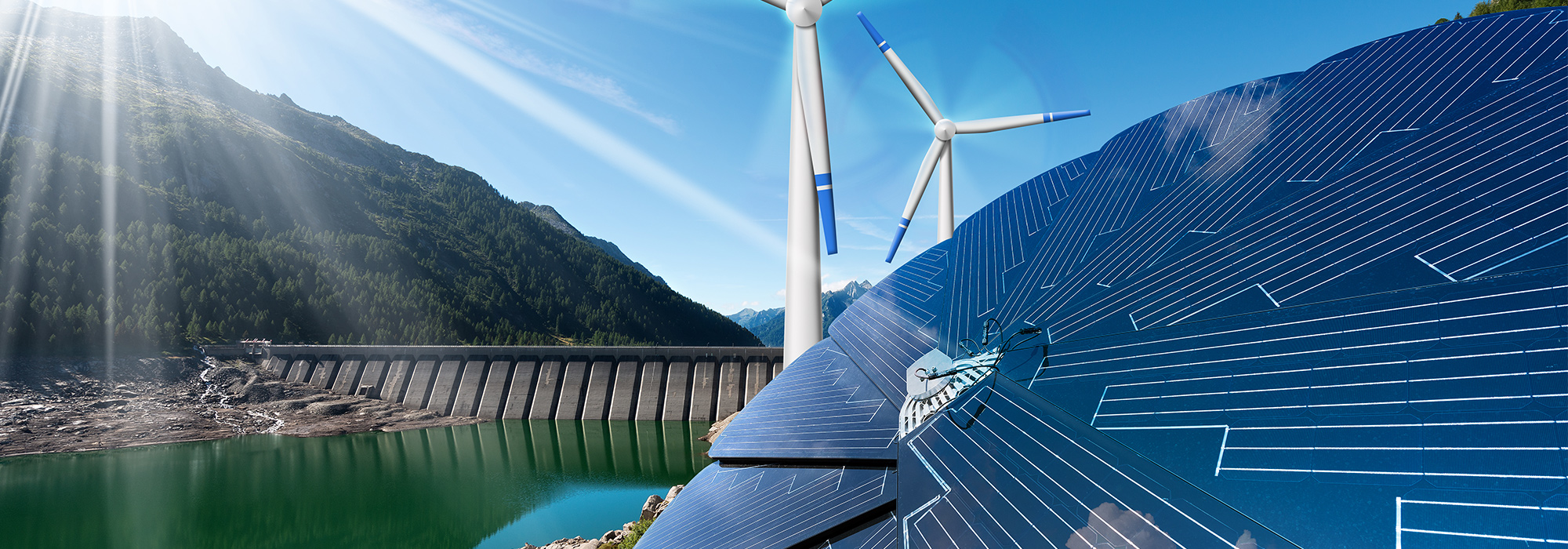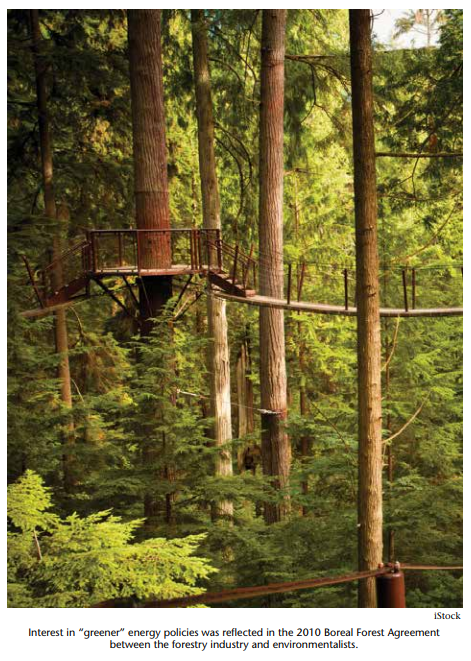
Canada’s story in the next decade will be energy. Growing the energy economy is our most pressing national project, and it demands cooperation to leverage our comparative global advantage in this field. The politics of energy will also underscore the fault lines of our federation. A Canadian energy strategy could bridge national divides and facilitate an important conversation about Canada’s future.
Prime Minister Stephen Harper famously declared that Canada is an energy superpower. Indeed, the energy potential of our nation is immense. Canada is among the major producers of almost every source of energy, and Alberta has roughly a third of the world’s potential oil reserves. According to Fatih Birol, chief economist of the International Energy Agency, “Canada is one of the cornerstones of the global energy system and will stay so for several decades to come. This is definitely very good news.”
But how do we define an energy superpower? Douglas Macdonald, a lecturer at the University of Toronto, provides a useful definition of power. Power is the ability to influence the behaviour of others in an overt conflict, to put issues on the policy agenda or keep them off the agenda. On these counts, Canada does not effectively project power on the energy file. For instance, the Keystone pipeline, a strategic initiative for Canada, was delayed by our closest ally, the United States.
The key to becoming an energy superpower is maintaining and developing the social licence to operate energy projects within Canada and among our international partners. Social licence is the intangible, ongoing public acceptance granted to energy development projects. It needs to be maintained and earned. Critically, the case needs to be built for Canadians as to why becoming an energy superpower is valuable. Canadians from coast to coast need to understand the economic benefits of our energy exports. They also need to be assured that our energy resources will be developed according to world standards by governments and companies that take climate change seriously.
The main challenges in Canada’s coming of age as a energy superpower are building critical energy infrastructure, managing intergovernmental conflict and addressing climate change. At the core of these issues is the requirement to maintain and enhance the social licence to do so.
An energy superpower needs new and diversified markets, just as the world needs new sources of energy production. Canada is one of the few producers that can drastically expand its crude oil production. In addition, it is the only free-market, democratic producer among the major crude oil producers.
Global demand for energy is undergoing a transformation. Demand in China and India will surge as their economic development and car ownership rise. China will replace the United States as the number one importer of oil. In addition, new technologies, such as hydraulic fracturing, are transforming the oil industry in North America, as we have seen with the dramatic expansion of the shale natural gas resource. The supply of “tight” oil, also called shale oil (found in sedimentary rock), may reduce the demand for increased production from the oil sands. Shifting patterns in energy demand mean that Canada needs to diversify its market access fast and make Asian markets a priority.
Canada requires an incredible investment in energy infrastructure to capitalize on the government’s claim that Canada is an energy superpower. According to Jim Prentice, vice-chairman of CIBC and former federal minister of the environment, Canada is in the midst of an infrastructure “supercycle,” with 28 current and proposed projects in the energy sector alone. These investments total close to $75 billion.
The controversy over energy projects illustrates that we need an inclusive conversation about Canada’s national interests regarding the development of energy resources. However, several key players, including the federal government, are sitting on the sidelines.
While the need for infrastructure investment is clear to industry and energy observers, there is public contestation of these projects. Driven by the logic of the market and engineers’ incredible ability to innovate, some infrastructure projects seem designed to attract the maximum ire of environmentalists and the public. Think about the implications of designing a pipeline cutting through the heart of the Great Bear Rainforest, or a pipeline that passes through Nebraska’s Sandhills and Ogallala aquifer. A more indirect and less offensive route may be less costly in the end.
On the Northern Gateway pipeline, the Conservative government has set itself up for a battle royal with environmentalists, British Columbians and First Nations. As a test case for how Canadians discuss and decide major energy projects, the Northern Gateway project is becoming increasingly divisive.
The controversy over energy projects illustrates that we need an inclusive conversation about Canada’s national interests regarding the development of energy resources. However, several key players, including the federal government, are sitting on the sidelines. The discussion needs to address all types of energy projects — from the oil sands and nuclear energy to wind turbines. We, as consumers, demand increasing energy services, yet we are intolerant of the infrastructure required to generate and deliver that energy. Basic energy literacy, too, is depressingly low, which is a major impediment to having any sort of informed discussion.
The changes to the National Energy Board Act contained in the 2012 omnibus federal budget bill are important, but they may further exacerbate the divisive nature of the Northern Gateway project. The changes will leave the ultimate decisions to the cabinet, rather than vesting the final power to approve projects such as these in the regulator alone. Currently, the Joint Review Panel (JRP), which is mandated by the federal government to assess whether a project is in the public interest, is a proxy for discussing a wide range of important issues regarding energy development and environmental protection. However, the JRP process is not an appropriate forum for broad discussion. Under the new legislation, the environmental assessment process will have a narrower scope to provide its technical recommendations.
Ultimately, whether the Northern Gateway should proceed or not will be a political decision. We can ensure that the engineers are able to build the pipeline to industry-accepted levels of risk, and we can trust our regulators that the necessary rules will be developed. What the engineers and regulators cannot decide, however, is what level of risk (from an act of God or human error) Canadians are willing to accept. In this regard, our elected representatives should be responsible for making the “national interest” decision, rather than the regulators.
The negative aspect of the new environmental assessment legislation, however, is the implicit message coming from the government that forums for public consultation are unimportant. The federal government does not seem concerned about the social licence of the Gateway project, which could prove to be the project’s undoing.
Quoted in the National Post of April 19, 2012, former Enbridge vice-president Roger Harris said, “This is not an exercise in looking for simple solutions to complex problems — putting a clock on something. If that’s all it would take to get things through the regulatory process, someone would have done it a long time ago.”
The Northern Gateway pipeline will likely be approved by the Conservative government in short order. But at what cost? Will the federal government force British Columbians to accept the pipeline, even if significant portions of the population are deeply opposed to it? This decision will have an impact on the upcoming British Columbia provincial election. It could usher in a new era of NDP government and create tensions over energy infrastructure with neighbouring Alberta. Forcing BC to accept Northern Gateway could see the province borrowing from a traditionally Alberta-styled playbook and start throwing its weight around more assertively in the federation.
The other important aspect of energy development is climate change. Climate change is not really an environmental problem; it is an energy problem, with solutions that lie in transforming our global energy systems. This is a long-term proposition. Transforming the energy system is required because of two urgent issues, climate change and, as the International Energy Agency terms it, the end of “cheap oil.” Managing this transformation and reconciling the need to reduce greenhouse gas emissions will be key to how Canadians perceive energy development.
Our foreign policy on climate change has been bullish, but in the long term this is not well oriented to promoting Canadian energy products. While many of Canada’s energy producers have done a lot of good work on improving their environmental performance, that fact has been lost in the fray. This is in part due to a federal government that is markedly unconcerned about climate change and the associated risk to industry from Canada’s growing reputation as an environmental laggard. Even industry producers and associations like the Canadian Association of Petroleum Producers and the Council of Chief Executives have publicly supported a broad-based carbon price, given certain parameters.
As the Commissioner of the Environment highlighted in his spring 2012 report, it is highly unlikely that the federal government will meet the greenhouse gas reduction target it agreed to as part of the Copenhagen Accord in December 2009. This target entails a reduction of 17 percent below 2005 levels by 2020. Environment Canada itself estimates the gap between slated emissions and the Copenhagen target to be 178 megatonnes, approximately three-quarters of the reductions needed. Since the federal sector-by-sector regulatory approach is so delayed that it will make virtually no impact by 2020, most of the federal government’s strategy seems premised on adding up provincial emissions targets. We already know, however, that most of the provinces will not meet their targets and, critically, that Alberta’s emissions will continue to rise.
The government has sought political cover by adopting the American Copenhagen targets as our own. It will, however, be significantly harder for Canada to meet its targets. As the soon-to-be-extinct National Roundtable on the Environment and the Economy warned, Canada faces higher abatement costs than the United States and will require more stringent regulations or a higher carbon price to meet the same targets as the United States. Canada also faces much higher abatement costs than the European Union. Andrew Leach of the University of Alberta suggests that for the EU to meet its targets, it is looking at emissions reductions opportunities costing around $50 per tonne. For Canada to meet its targets, we are looking at emissions reductions opportunities costing around $150 per tonne.
What this means is that while the Harper government has extracted Canada from the Kyoto Protocol, it has set itself up for a problem meeting the Copenhagen targets. With a limited plan to achieve reductions, it will be difficult for Canada to meet them in a short amount of time. Canada should consider reframing its participation in international climate negotiations around “level” of effort. This would see jurisdictions commit to similar levels of effort rather than focus on distant outcomes and targets that, so far, have only been aspirational.
Of course, reframing Canada’s image as an environmental laggard will require a substantive shift in policy that goes beyond a “green” public relations campaign. Credibility will be hard won, as we have witnessed in the paradigm-changing Boreal Forest Agreement, signed in 2010. This is an accord between the forestry industry and environmentalists that includes a commitment on the part of industry to improve environmental performance and an end to the protests and boycotts by environmental groups. Although the Conservative government has achieved more stringent regulations on vehicle emissions, the broad strokes of its climate policy leave little to dispel the impression that it views the problem with a minimal amount of urgency.
The more recent agenda to de-legitimize environmental groups suggests a government with little time for the consensus-building required to enhance Canada’s social licence to operate.
Ensuring a robust social licence to operate is important both for domestic constituencies and for our international partners. Canada cannot successfully leverage its comparative advantage as an energy producer without a strategic partnership among the federal and provincial governments and other stakeholders. It is not destiny that will drive Canada to energy superpower status, it is determination. There are many issues where a strategic focus could be brought to bear, from developing human capital in the energy sector to technological innovation. Timely access to markets, too, will need full engagement from stakeholders, as delays in the courts might bog down projects. The current and coming battles over infrastructure highlight the prospect of a decade marked by divisive battles among the varied provincial interests regarding energy development and environmental protection.
What tools does Canada have to build its social licence, manage conflict and develop our potential as an energy superpower? One tool could be to take up Alberta Premier Alison Redford’s call for a Canadian energy strategy, which was recently backed by the western premiers. A coordinated Canadian energy strategy has merit, even if it has been maligned in the media or coolly received by the federal government. This call from Alberta and other energy stakeholders should not be viewed, however, as yet another government strategy to create a strategy, or as an approach that necessarily increases federal intervention.
Canada cannot successfully leverage its comparative advantage as an energy producer without a strategic partnership among the federal and provincial governments and other stakeholders. It is not destiny that will drive Canada to energy superpower status, it is determination.
Instead, a Canadian energy strategy should be viewed as a call to action for all stakeholders to nurture Canada’s domestic and international social licence to “grow” the energy sector. Primarily, the strategy should be a platform for communicating to Canadians why becoming an energy superpower would be a strategic opportunity for the entire country. A Canadian energy strategy would be about developing new markets and mobilizing energy technology. Coordinated provincial and federal government projects could bring a comparative advantage in energy and make us global energy innovators.
A Canadian energy strategy needs to be communicated on the scale of the Economic Action Plan, with its corresponding federal communications rollout and complementary provincial initiatives. The Prime Minister himself should be giving stump speeches across the country emphasizing this critical opportunity. But a Canadian energy strategy will not be well received if there is no comprehensive climate plan and if the attacks on environmentalists continue.
According to a May 2012 Léger Marketing poll commissioned by Alberta Oil magazine, 78 percent of Canadians supported the “idea that Canada needs a national energy strategy,” with only 3 percent opposed to the idea. The poll found that Canadians are increasingly paying attention to the energy sector, and that this may be the right time to engage on the sector’s importance to the economy and how best to manage its environmental impact.
The next decade will be critical for Canada. The global economic structure of energy is changing rapidly; staying in the game requires more than an unsubstantiated claim to being an energy superpower. This energy superpower needs to come of age.
Photo: Shutterstock








